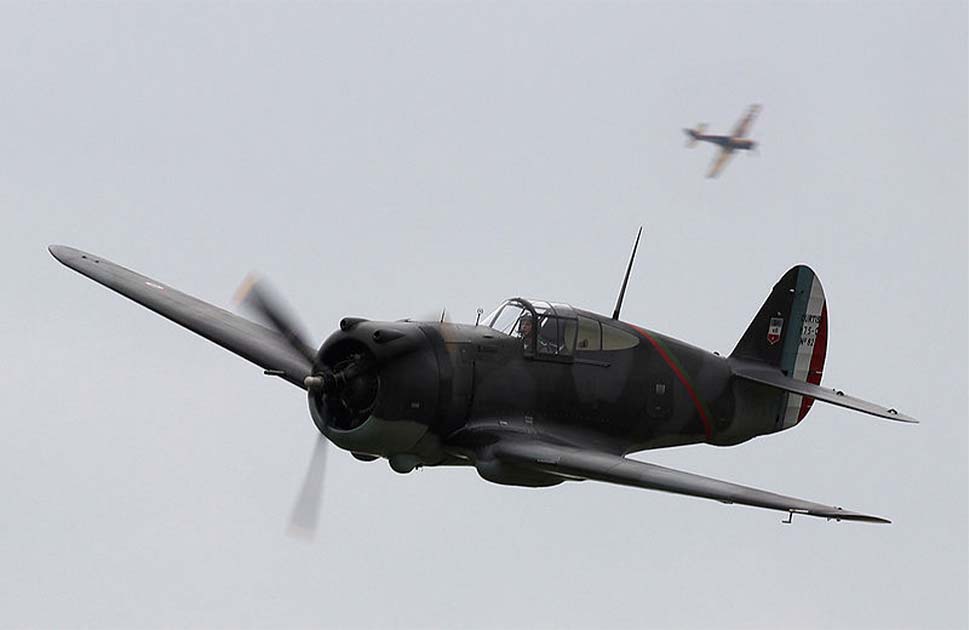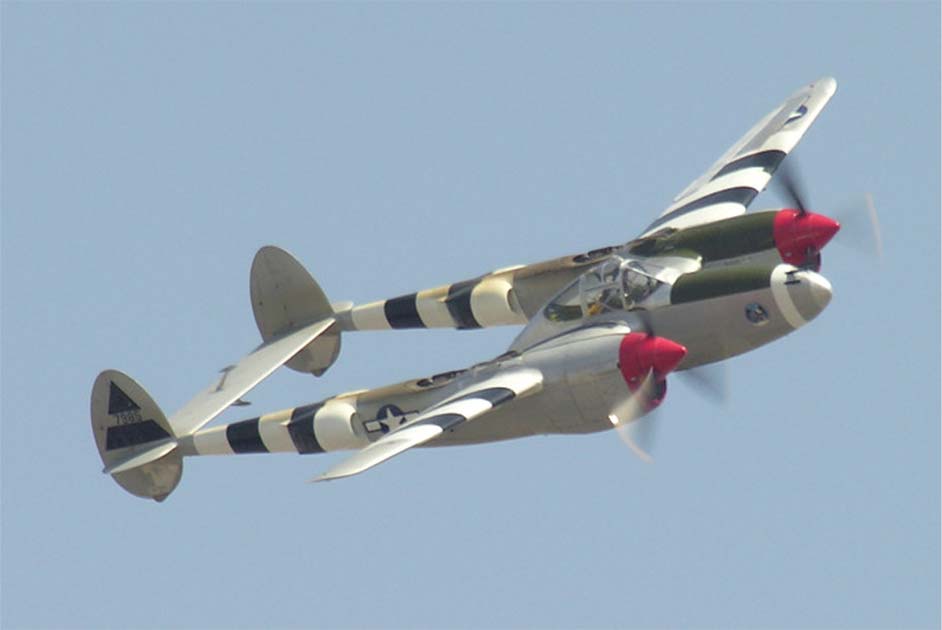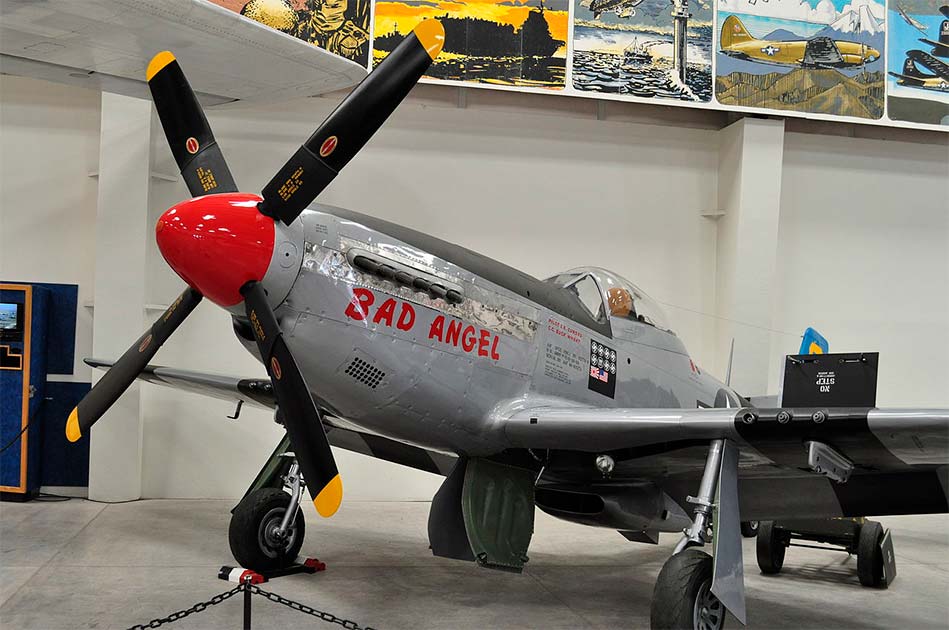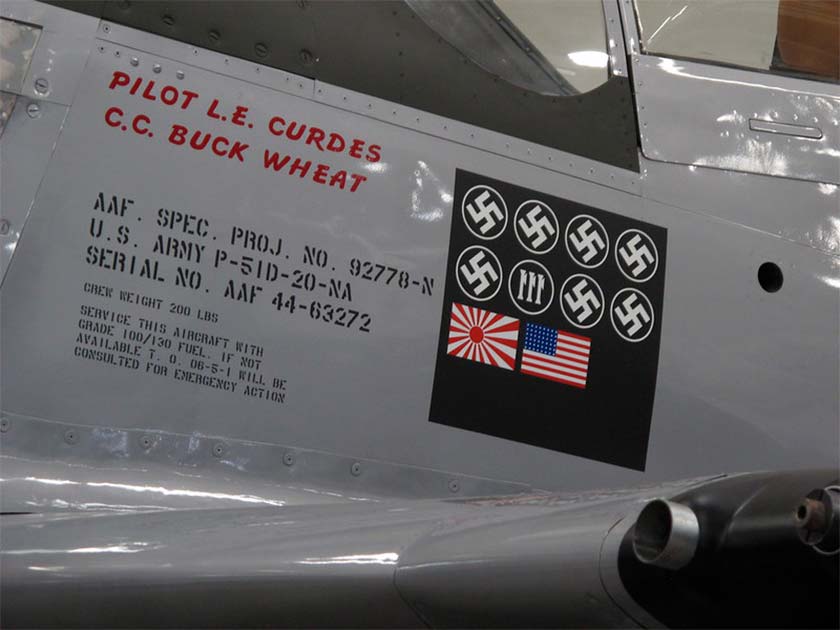Louis Curdes was a rare talent. A name synonymous with daring feats in the skies, Curdes transcended borders and flew into the pages of history with an extraordinary record. A triple Ace and possessed of exceptional personal bravery, Curdes fought in multiple theaters and downed aircraft from every Axis power.
Even after being shot down and spending months in a POW camp and on the run, he returned to the skies. WW2 was full of heroes but few of them were quite like Louis Curdes.
America’s Greatest Fighter Pilot
Curdes was born on 2 November 1919 in Fort Wayne, Indiana. He came from humble beginnings: his mother Esther was a retired teacher, and his father, Walter Curdes, worked in real estate. Curdes grew up during the Great Depression and graduated from North Side High School in 1938, just a year before the outbreak of World War II.
Louis inherited a love of all things aviation from his father. As a boy, his father took him to air races at Smith Field, Cleveland, and Georgia.
At just 9 years old Louis got his first taste of life in the air when he got to ride in a World War I Curtiss JN Jenny. Louis’s father had helped the famed pilot Art Smith build his aircraft and took Louis to see the building of the USS Akron and the USS Macon airships, serene giants of the skies.
After graduating high school Curdes decided to enroll at Purdue University to study engineering in the hopes of one day working on planes himself. When WW2 broke out Curdes was busy studying to be an engineer, and so didn’t really follow the war happening over in Europe.

In the third year of his studies, Curdes decided that engineering wasn’t for him and decided to drop out of school to join the military as a pilot. His timing couldn’t have been more opportune. He quit school on 6 December 1941, just one day before the attack on Pearl Harbor and America’s entry into the war.
A month later, Curdes began his training as a Flying Cadet. He spent the next 7 months being shipped across the US, training on various aircraft including the Stearman PT-13, North American T-6 Texan, and Vultee BT-13 Valiant.
The highlight of his training was being allowed to fly the high-performance Curtiss P-36 Hawk, an honor few cadets got to experience. The Hawk was state of the art, a fully realized modern aircraft only introduced in 1938.
On 12 March 1942, his training almost complete, Curdes joined the Army Reserve. He was quickly promoted to 2nd Lieutenant and graduated as a pilot on 3 December 1942. He was just 23 years old.
Becoming an Ace
Curdes’s flying career proper began with his transfer to the 82nd Fighter Group, 95th Fighter Squadron in March 1943. Upon arriving in North Africa Curdes was handed the keys to a Lockheed P-38 Lightning the American heavy fighter which would later become legendary in the Pacific theater. He would go on to put it to good use.
Curdes’s first mission of the war was on 23 March 1943. During the flight, he engaged several of the smaller and more agile Messerschmitt Bf 109s belonging to Germany’s Jagdgeschwader 27. Despite being severely outnumbered, Curdes managed to shoot down three and severely damage a fourth.
By the time, the dogfight was over, Curdes was out of fuel. He was forced to land in a dry riverbed where he waited for the army to resupply him and allow him to take off again.
Two months later Curdes was tasked with escorting B-25 Mitchell bombers over Villacidro, Sardinia. The escort went relatively smoothly but, on the way back his unit was ambushed by eight Bf 109s. In the ensuing aerial battle, Curdes managed to take down two more enemy planes. These skills put him over five confirmed air-to-air kills and earned him the title of Flying Ace.
The ace then took another escort mission on 24 June, during which he took down an Italian Macchi C.202. The following month he crippled a German Bf 109 while flying over Pratica di Mare, Italy. In August of the same year, he received his first medal, the Distinguished Flying Cross.
Ace Down
Even aces like Curdes get shot down and his luck ran out on 27 August 1943. While on an escort mission to Benevento, Italy, Curdes’s unit was attacked by around 50 enemy aircraft.
During the attack, Curdes heard on his radio that one of his teammates was coming under heavy fire from multiple Bf-109s. Curdes decided to go against regulations and turned around to aid his comrade.

Curdes took down two of the enemy planes, but his plane was heavily damaged in the process. He managed to land his crippled aircraft on a beach 10 miles (16 km) south of Salerno. Despite having received injuries to his back and shoulder he succeeded in destroying his plane before enemy troops arrived.
Curdes was quickly captured by Italian soldiers and spent the next nine months attempting to escape from multiple enemy POW camps. Eventually on 27 May 1944, following Italy’s switching of sides, he managed to make his way through to Allied lines. Several weeks later he received a hero’s welcome in Fort Wayne, his friends and family having feared he’d been dead for the last nine months.
- The Aurora Rumor: America’s Hidden Spyplane
- Yamamoto: How did the U.S. Manage to Kill the Legendary Japanese Admiral?
Curdes initially decided to sit out the rest of the war, spending his time catching up with his family and fishing. He swore to never fly again. This all changed when he ran into an old college friend, Bud Mahurin, who convinced him to return to active duty.
This was problematic, however. Due to the Geneva Conventions, and the fact he had been a POW, Curdes was banned from reentering the European theater. The solution was to join the 4th Fighter Squadron and the 3rd Air Commando Group and join the fighting in Asia, which he did in August 1944.

It didn’t take long for Curdes to get back up to speed and was soon making a name for himself bombing Japanese bases, escorting Allied ships, and supporting Allied ground troops in the region. On 7 February 1945, he got his first confirmed kill against a Japanese plane, meaning he had shot down planes from every major Axis power.
His next act of heroics came on 10 February whilst leading a squadron of four aircraft departing from Mangaldan Airfield in the Philippines. During this flight, he spotted a suspicious-looking aircraft preparing to land at a Japanese-held airbase and decided to investigate.
The plane turned out to be a Douglas C-47 Skytrain transport belonging to the 39th Airlift Squadron of the 317th Troop Carrier Group. Realizing the plane was friendly he tried to warn them on the radio but received no response. He then maneuvered in front of the plane to try and draw it away, but the plane refused to change course.
Little did he know the plane had gotten lost five hours ago and its radio was malfunctioning. Fearing how the people on the board would be treated by the Japanese upon landing, Curdes made the difficult decision to shoot the plane down. He crippled both its engines, forcing it to ditch into the sea.
The following day Curdes led a rescue mission to find the crew of the plane who had spent the night in lifeboats. Amazingly the crew, including two nurses, survived the crash. Even more amazingly, the recently divorced Curdes had been on a date with one of the nurses the night before the original mission.

By the end of the war, Curdes had flown a total of 48 missions, 38 in North Africa and 10 in the Pacific. His numerous kills against multiple enemy nations won him triple-ace status, a rare achievement indeed. While many pilots earned the title of ace during World War II, none have replicated Curdes’s feat of achieving this distinction.
Louis Curdes, the flying ace who did it all, leaves an enduring legacy in the skies he once conquered. His triple-ace status remains an unparalleled feat that continues to inspire aviation enthusiasts and aspiring pilots alike. Curdes’ story is not just one of individual achievement but a reminder of the collective bravery and skill of those who soared through the tumultuous skies of World War II.
Top Image: Louis Curdes, the only three-time Flying Ace of WW2. Yes, that is an American kill on the side of his aircraft. Source: Pima Air and Space Museum / Public Domain.